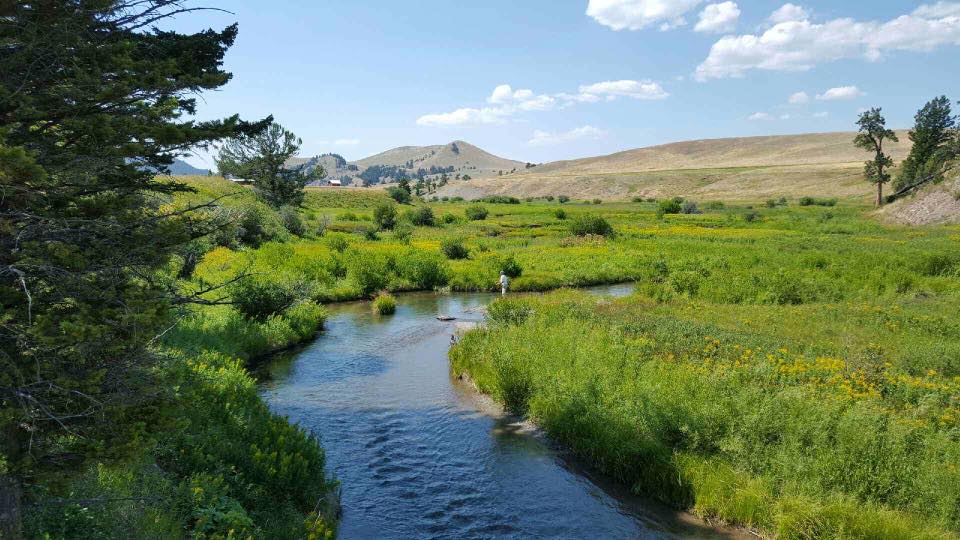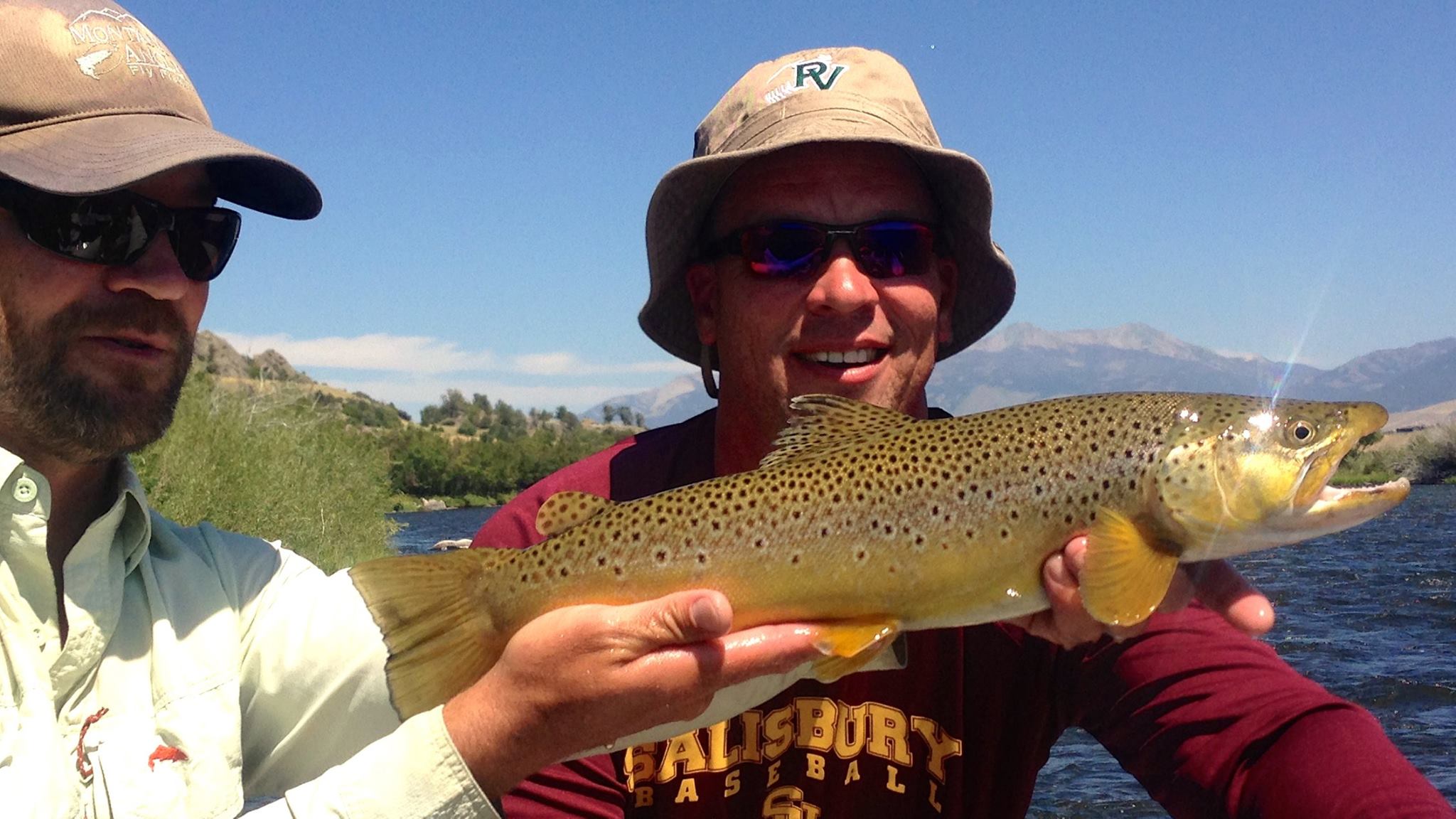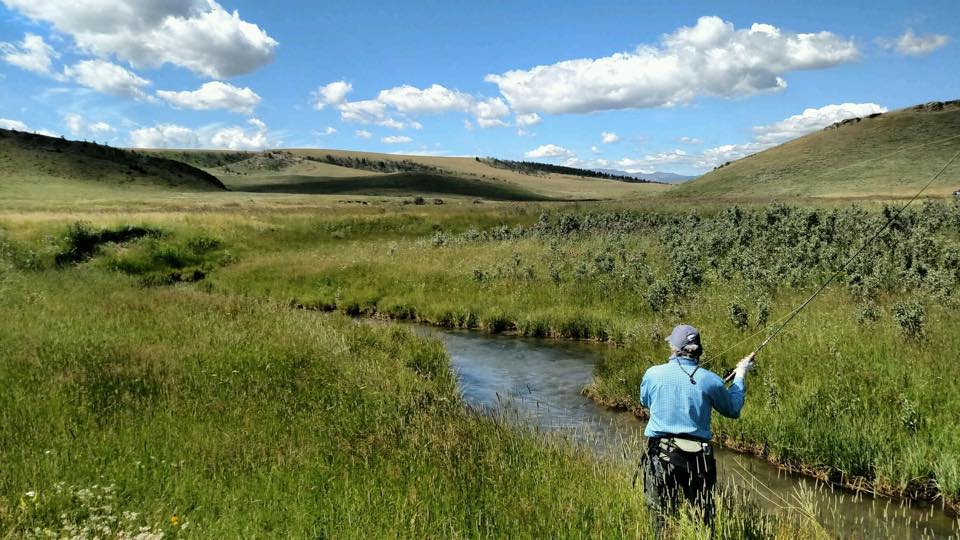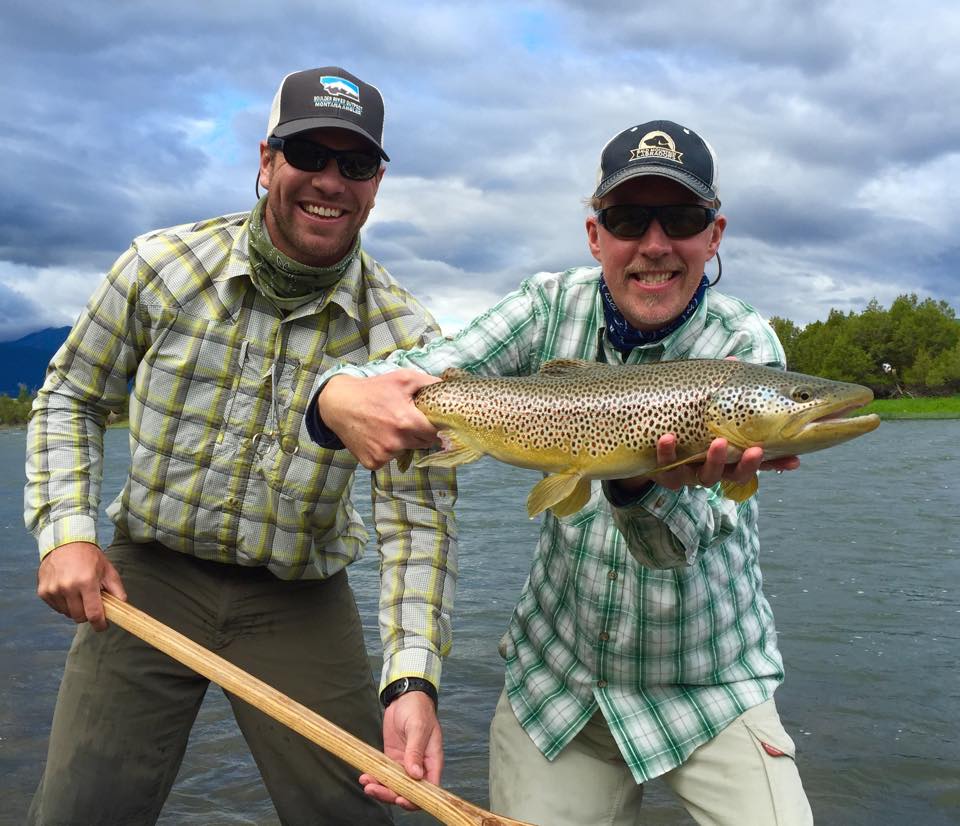Most rivers across Montana are hitting there mid-summer stride which means many of the aquatic hatches are subsiding with a few exceptions (like tricos, nocturnal stones and callibaetis) and transitioning to terrestrials and other non-hatch related food sources. Water levels will continue to drop as what is left of the snowpack trickles out so moving to smaller flies, longer leaders and finer tippet is often a successful tactic. Water temperatures are a huge driving force in mid-summer. Every fishery has a different temperature profile but it is an important factor to keep in mind. Some lower elevation fisheries are too warm for good fishing during the day (like the Jefferson and Lower Madison). Other fisheries are best in the early morning and some still fish really well in the afternoon (like rivers closer to the mountains or spring creeks with colder water temps).
General
Water levels are slowly dropping on rivers and streams. Mid-summer days are long and when the weather is hot trout often lay up during the midafternoon hours on the larger rivers. On big rivers like the Madison and Yellowstone the morning fishing has been better than the afternoon fishing but this depends on daily temperatures. On a hotter than average day the best fishing is often before 2 pm while on cooler days great fishing can extend late into the afternoon. An afternoon thundershower can often trigger a feeding binge with an hour of fast action streamer fishing. Trout are becoming more opportunistic as aquatic hatches subside and are looking for a mixed bag and are not as selective as they were in the early summer period. For surface action terrestrials like grasshoppers, beetles and ants are starting to be a factor and should become more effective with each passing day. Large golden stones with stubby wings hatch in late July (often referred to as nocturnal stones or “noc” stones) and fishing large tan foam patterns early in the morning or medium brown stones in the afternoons subsurface can produce good results. For subsurface try big patterns that imitate small bait fish like sculpins along with smaller attractor nymphs that are pretty general. There are still some late caddis hatches in the early mornings and on some fisheries the tiny trico mayflies are thick. Pay very close attention to water temps as this will drive the best fishing. On the big rivers water temps are best in the early morning but on small mountain streams and shaded mountain rivers the early morning can still be pretty cold so just pay attention to the fishery you are on. Some lower elevation fisheries just get too warm for safe fishing and fighting a fish in 75 degree water can kill the trout so stay away from the lower elevation big river fisheries until they hit their stride again in September. Also pay attention to regulations as some fisheries are closed to fishing after 2pm, generally these are not the best summer fisheries anyway. On days when a cold front pushes in or we have good cloud cover some water temps will be lower than normal and you can fish waters later into the day or visit rivers that are normally spring and fall fisheries. Trout eat every day so just make sure you are on the river during their feeding window – when that is just depends on the fishery.
Summer is the busiest time of the year for fly fishing in Montana so trout on popular public waters have now seen some flies. It pays to try to think outside the box and get off the beaten path. If you can find lightly pressured waters trout will aggressively slam big hopper patterns. If you are fishing waters that see a lot of pressure the hopper takes might only be so so. This is the time of year when we start working extra hard to find trout that have seen fewer flies. Sometimes that means a visit to a private ranch, a long hike or simply fishing water on the big waters that other guides are skipping past like the backside trough of a rock well on the Madison that can only be cast to from the bank and not from the boats float fishing past.
Hatches
Many of the aquatic hatches have run their course. The main hatches this time of year are the tricorythode mayflies (tricos), a few late caddis, and callibaetis on the lakes. There is also a nocturnal hatch of large stoneflies (most of us call them nocturnal stones) that can get the trout keying in on large stonefly dries at dawn or stonefly nymphs subsurface. Tricos are not thick on all waters but where they occur in abundance they can bring a lot of trout to the surface. The gulper fishing on lakes like Hebgen and Ennis can bring large trout to the surface when the callibaetis mayflies hatch in the late morning and this should improve as we move deeper into summer.
Terrestrials now are more important across Montana. Hoppers are now mature and flying. The trout are just now beginning to key in on them. On some rivers they aren’t quite looking for them and on others the bite is already on. The quality of the “catching” over hoppers depends on the amount of pressure trout receive. They get pretty smart after they see a dozen foam hoppers a day so look for waters that see less anglers for the best hopper fishing. If you are targeting more popular fisheries you may have more luck with more technical terrestrials like small beetles and ants. In the mountains hoppers are less important but keep an eye out for spruce moths – they are flying in the mornings and trout love them.
Fly selection
Trout in most of our waters are much more opportunistic now that many of the aquatic hatch cycles have finished. The exceptions are if there is a strong hatch like the trico or callibaetis (lakes) on the water or perhaps a very windy day blowing lots of hoppers in. If you see a lot of stonefly husks on the banks try a girdle bug sub surface or a big chubby just after dawn when the nocturnal stones are still skittering around the water. The reduction of aquatic hatches can be a good thing for the angler because trout are not as willing to move long distances when there is a strong hatch. For surface patterns nothing beats a hopper if you are on lightly fished waters. If you are on more waters that see a lot of summer anglers then try more subtle patterns like ants and beetles. On the lower Yellowstone and Madison try some stonefly patterns that imitate the nocturnal stones. For nymphing trout will start moving for a lot of sculpins but if nocturnal stones are around a size 6 rubber legs will still produce. There are usually still some caddis popping early in the morning so trailing a bigger fly with a caddis pupae is a good way to start the day and then transition to more of an attractor nymph as the day progresses like a lighting bug, prince or copper john. Smaller droppers and finer tippet sometimes makes a difference but no need to drop to anything below 5x unless you are on a spring creek.
Reading water
Where the trout are holding will depend greatly on water temps. On the bigger rivers trout are moving into heavy water with more oxygen so skip all of the slower slicks and start focusing on fast water. On cold rivers in the mountains the trout will still be in the slicks and tail outs.
For more information on fishing in Montana and the American West please contact Alex Jardine or call our office on +44(0)1980 847389.




